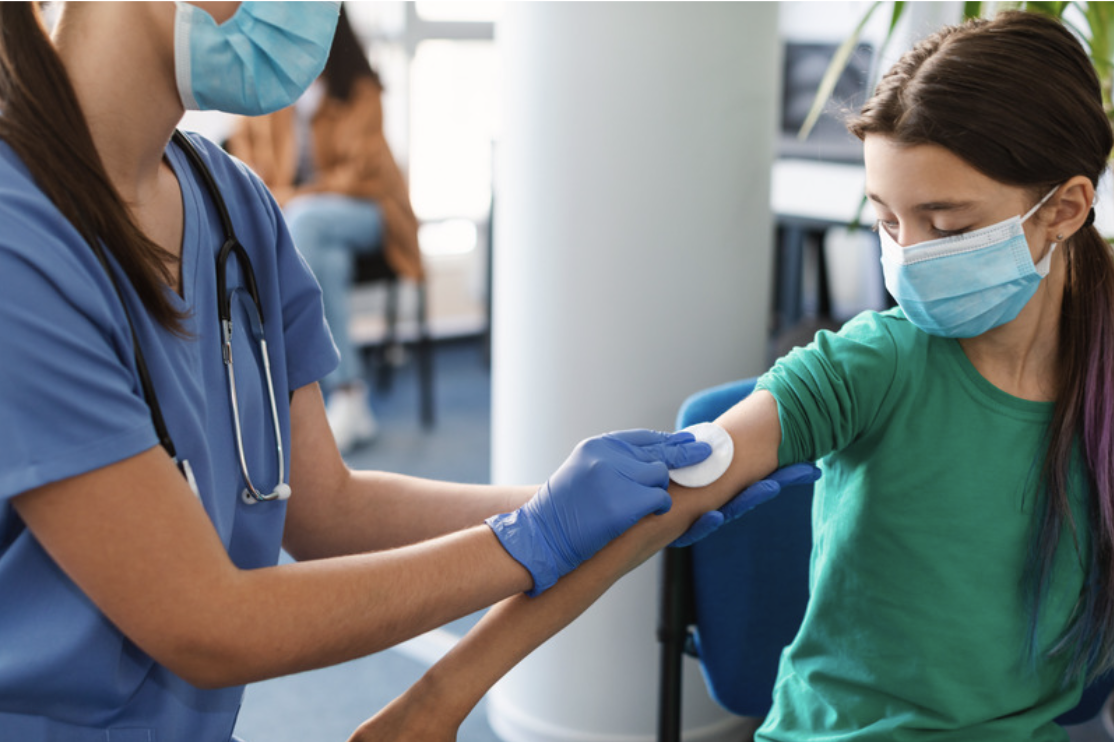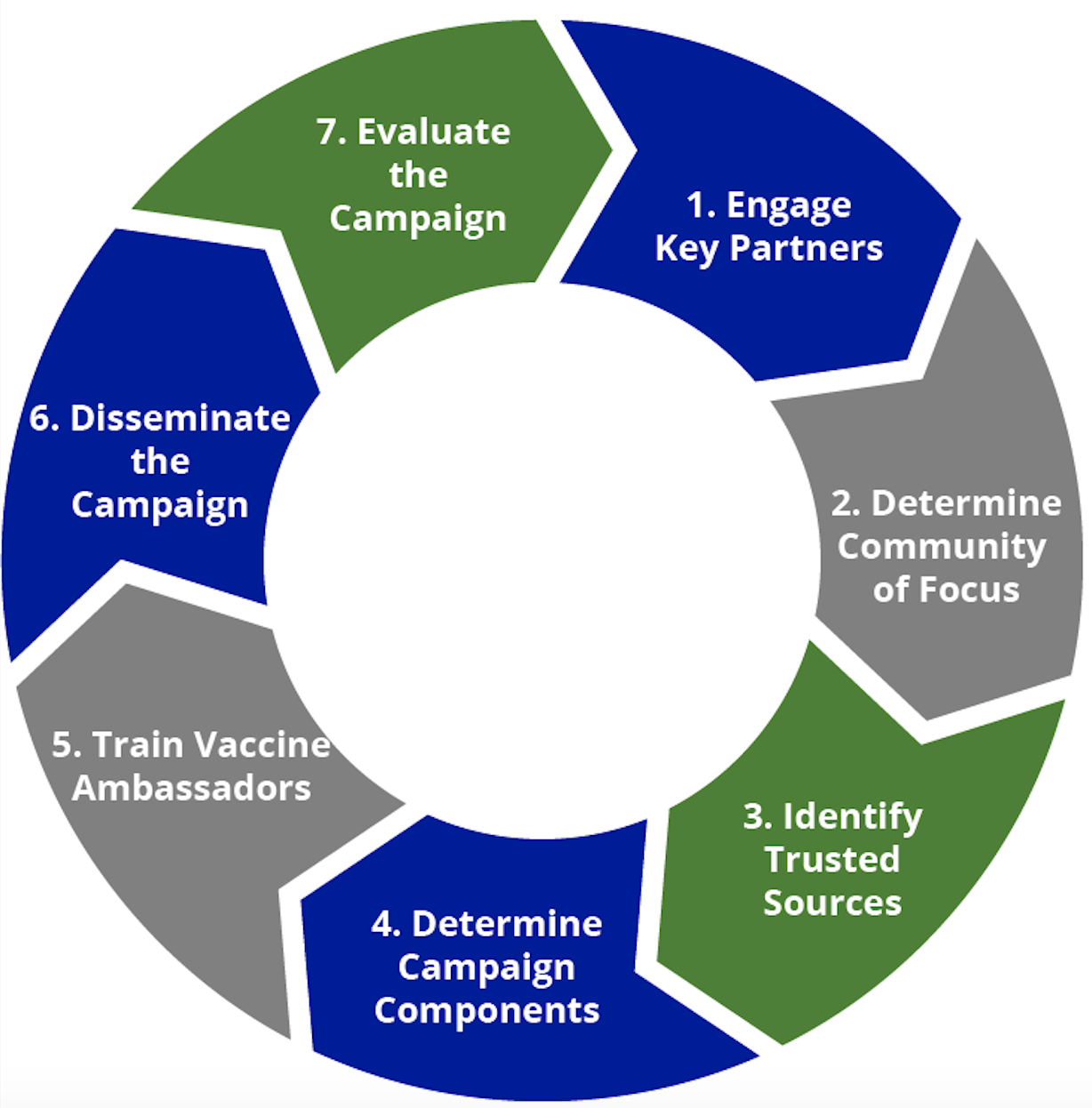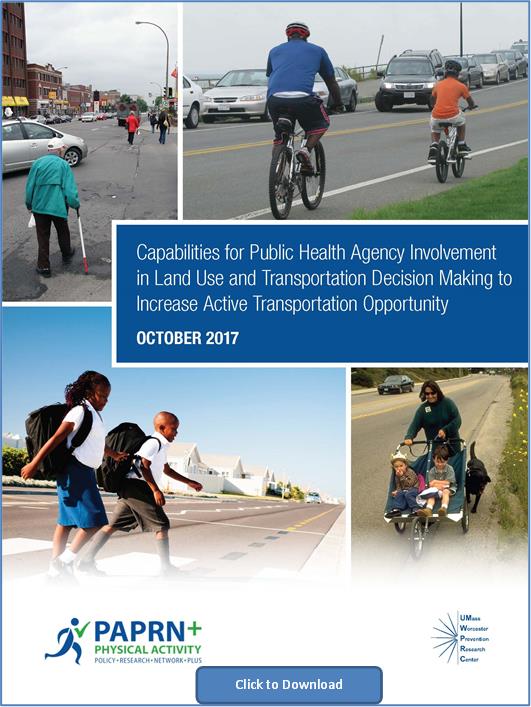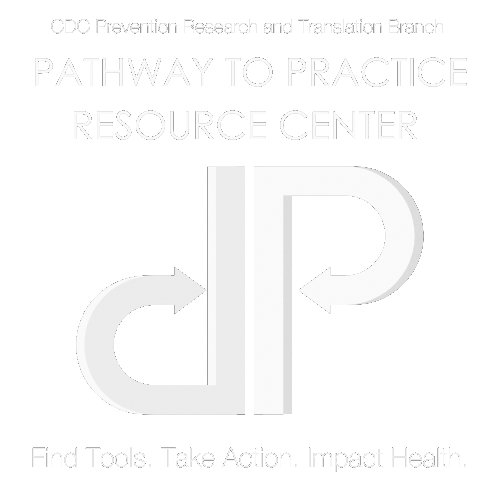Research Briefs
UMass Chan Prevention Research Center
Research Briefs!
Research Briefs are short summaries of our research.
Click on the titles below to read the Research Briefs in each category.
Youth & Family
Trends in COVID-19 vaccine administration across visit types in a safety net pediatric practice during the first year of authorization
Research shows that many parents would prefer to get their child vaccinated at their pediatrician’s office. However, little is know about how often COVID-19 vaccines are administered, and during which types of visits. Although COVID-19 vaccination prevents severe disease and hospitalization in children and adolescents, vaccination rates are too low. As COVID-19 vaccines are most likely delivered in pediatric practices, the study explored COVID-19 vaccine delivery in pediatric practices to guide future vaccine promotion efforts.
Empowering Youth Vaccine Ambassadors to Promote COVID-19 Vaccination in Local Communities: A 7-Step Approach
Despite the availability of COVID-19 vaccines for youth since 2021, uptake remains low, particularly among Latinx and African American youth. Addressing vaccine hesitancy remains critical to prevent unnecessary morbidity and mortality from COVID-19 infection.

The Healthy Kids & Families Study: Outcomes of a 24-Month Childhood Obesity Prevention Intervention
Almost 1 out of every 5 children between 6-11 years old living in the United States have obesity. Rates of obesity are higher among children whose parents have lower income or fewer years of education. Obesity can lead to poor physical and mental health. There is little information about what approaches can prevent childhood obesity.
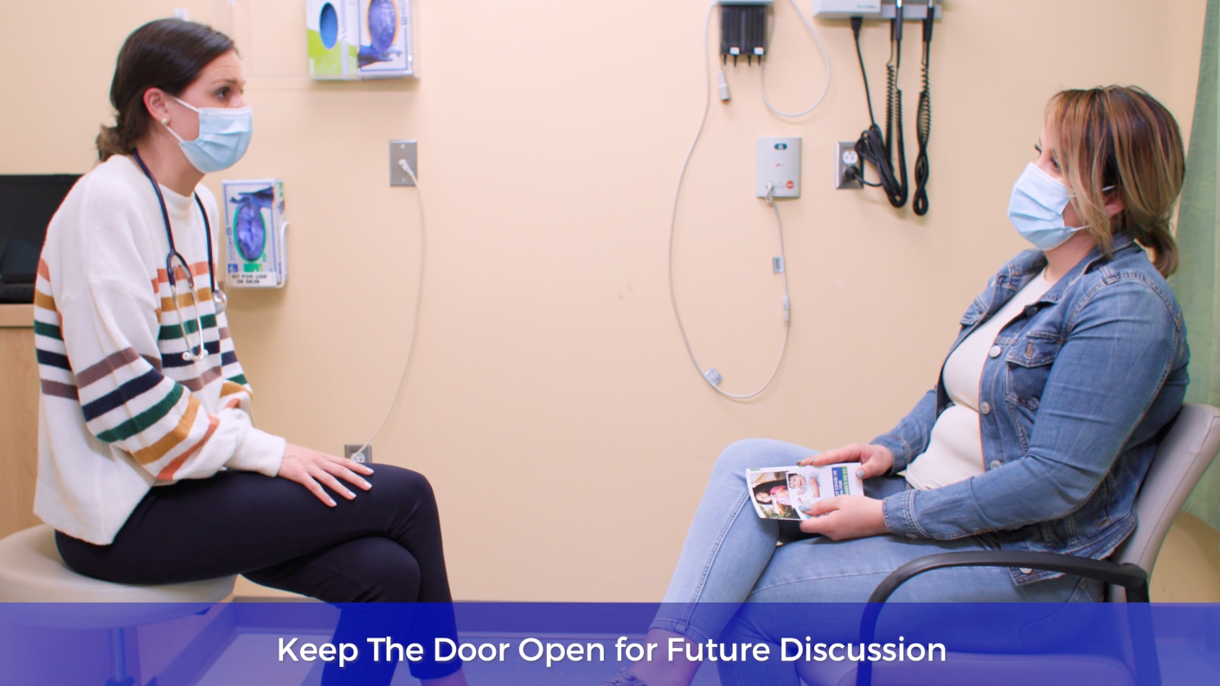 CONFIDENCE: Clinicians for Effective COVID-19 Vaccine Conversations for Youth and Adolescents
CONFIDENCE: Clinicians for Effective COVID-19 Vaccine Conversations for Youth and Adolescents
Despite COVID-19 vaccines being available to 12-17 year olds since May, 2021 and to 5-11 year olds since November, 2021, vaccine uptake remains suboptimal. Innovative strategies are needed to improve pediatric COVID-19 vaccination rates. CONFIDENCE: Clinicians for Effective COVID-19 Vaccine Conversations for Youth and Adolescents was developed to support clinicians in conversations with vaccine hesitant and resistant.
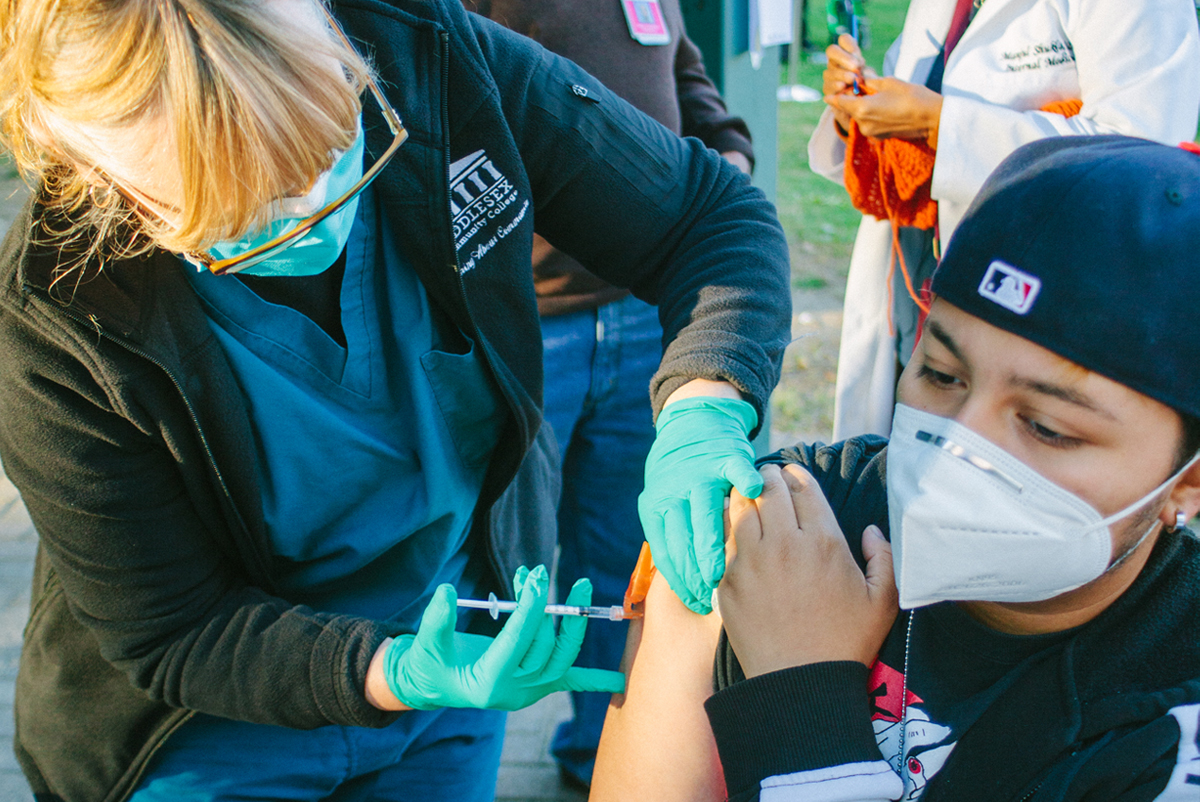 Clinician perspectives on COVID-19 vaccination for youth and families in central and western Massachusetts
Clinician perspectives on COVID-19 vaccination for youth and families in central and western Massachusetts
As parents view their child’s clinician as a trusted partner in caring for their children, a key to increasing rates could be involvement of the clinicians. Clinicians are on the front lines of efforts to improve vaccination rates through parental education, vaccine delivery or referral to community vaccine sites. Training on giving strong, presumptive recommendations, directly addressing misinformation, developing effecting messages, and integrating vaccine delivery best practices into routine practice are needed.

Parental attitudes, concerns, and thoughts about the COVID-19 vaccine for 5- to 11-year-old children: Focus group findings from Worcester, MA
Vaccine hesitancy is a long-standing public health issue that can result in low vaccination rates. This pattern is seen in the rollout of the COVID-19 vaccine among children, as the vaccination rates are low. Through focus groups, parents report that clear communication is needed to combat vaccine hesitancy. Parents want to hear vaccine decisions form healthcare providers and friends.

Differences in Blood Pressure Levels among Children by Socioeconomic Status
Overweight and obesity are major risk factors for elevated blood pressure. More children in certain sociodemographic subgroups of people experience elevated blood pressure. After adjustment for body weight, observed disparities in prevalence of elevated blood pressure in older, male, and non-Latino Black children remained. This indicates that factors beyond differences in body weight may contribute to disparities in blood pressure.
 Association Between Obstetric Provider's Advice and the Amount of Weight Women Gained During Pregnancy
Association Between Obstetric Provider's Advice and the Amount of Weight Women Gained During Pregnancy
Health care provider advice about weight gain during pregnancy matters. Too much weight gain during pregnancy may increase the risk of complications for the mother and the infant. Unfortunately, about half of all pregnant women gain more weight than recommended. This is particularly true for poor women and women from racial/ethnic minority groups. Research has found that health care provider advice plays an important role in patients deciding to change their behaviors. This study found that when health care providers give advice about pregnancy weight gain and this advice is followed, women are more likely to gain a healthy amount of weight during pregnancy.

Home matters: adolescents drink more sugar sweetened beverages when they are available at home
Sugar-sweetened beverages, such as sodas, fruit drinks, and sports drinks contain added calories with little to no nutritional value. As both the consumption of these beverages has increased more than 300% in the past 3 decades, and the percentage of adolescents who are overweight or obese has also increased, research points to these beverages as being a major contributor to weight gain. As adolescents are the highest consumers of sodas, fruit drinks, and other sugar-sweetened beverages, this study explored the availability of these beverages at home, the school and neighborhood. Sugar-sweetened beverage availability in the home was associated with adolescent sugar sweetened beverage consumption, regardless of sugar-sweetened beverage availability in other settings.
Overweight and Obesity Rates Are Improving Among Massachusetts Public Schools but Not Among Those in Socioeconomically Disadvantaged Districts
Childhood obesity is associated with many chronic diseases, such as high blood pressure, cardiovascular disease, asthma, and sleep apnea. The American Academy of Pediatrics advises that the body mass index (BMI) of children should be tracked over time, and the Institute of Medicine recommends that school systems track BMI. Since 2009, Massachusetts responded to these recommendations by measuring the BMI of children in grades 1, 4, 7, and 10. Community-based prevention programs should specifically target children in elementary schools in economically disadvantaged communities.
 Are Our Youth Meeting Recommendations for Physical Activity and Healthy Eating?
Are Our Youth Meeting Recommendations for Physical Activity and Healthy Eating?
Obesity rates among youth have tripled in recent decades, and are particularly high among Hispanic and non-Hispanic Black youth. This is a problem, because adolescents who are obese are more likely to become obese adults and more likely to have chronic health conditions, a shorter life expectancy, and face social discrimination. The Federal Government has created recommendations for physical activity and healthy eating through Healthy People 2020 and 2010 Dietary Guidelines for Americans. Many national and local campaigns have shared these recommendations. The Maine Youth Overweight Collaborative has combined 4 recommendations into a simple message for youth in its a “Let’s Go! 5-2-1-0” program. The messages are to eat five or more fruits and vegetables a day, limit screen time (television, video games) to no more than 2 hours a day, be physically active for an hour or more a day, and avoid beverages that contain sugar, such as soda. In this study, low rates of children and adolescents meet recommended dietary and physical activity guidelines, and there are large differences among youth of difference racial/ethnic groups. Despite public health efforts, there has been little improvement in meeting the 5-2-1-0 targets. The one area of improvement is an increase in physical activity among adolescents.
 How Obesity, Depression and Smoking Affect the Health and Productivity of School Staff and Their Students in Central Massachusetts High Schools
How Obesity, Depression and Smoking Affect the Health and Productivity of School Staff and Their Students in Central Massachusetts High Schools
Obesity, depression and smoking affect the work of high school faculty and staff. These health risks can cause teachers and staff to be less productive at work, and to be absent from work more often. The lower productivity and increased staff absences can negatively influence the health of students and their academic success. Addressing employee health risks can improve their health and increase productivity, and help students learn the importance of taking care of their own health. This study found that there is an impact on everyone at school when teachers and staff are not feeling well while they are at school, and are absent more often. Teachers and staff who are obese, depressed, or who smoke may have lower job satisfaction, which can lead to high job turnover rates, and can even disrupt students’ education. Productive, healthy school staff can be role models for students and foster learning. They can contribute to students’ health-related education and even academic success.
Health Equity
Pediatric Guideline Recommended Blood Pressure Screening: Health Record Data from a Massachusetts Healthcare System
Childhood high blood pressure (BP) is associated with adult cardiovascular disease, and therefore is increasingly seen as a critical public health issue. The American Academy of Pediatrics (AAP) issued clinical practice guidelines in 2017 recommending regular blood pressure (BP) screening in children and more frequent screenings for children at increased risk due to conditions such as obesity. Although in general these BP screening guidelines were followed, important differences were found at both the child and clinic levels related to social factors.
Pediatric Guideline Recommended Blood Pressure Follow-up: Health Record Data from a Massachusetts Healthcare System
An estimated 1 in 30 children in the United States have hypertension (high blood pressure), and 1 in 12 children in the US are affected by elevated blood pressure. These conditions put children at increased risk for developing hypertension and cardiovascular disease as adults. Diagnosis of elevated blood pressure and hypertension is based on high readings at 3 time points, therefore following up after the first high reading is important. In 2017, the American Academy of Pediatrics (AAP) issued guidelines for clinicians recommending regular blood pressure screening and follow-up, the extent to which these guidelines are followed in clinical practice was unknown.
 Association Between Poor Sleep Quality, Emotional Eating and Emotions Among Latinx Adults in the United States
Association Between Poor Sleep Quality, Emotional Eating and Emotions Among Latinx Adults in the United States
US Latinx adults are more likely to have poor sleep quality than non-Latino white adults. Poor sleep is linked with negative emotions such as feeling depressed, stressed, and anxious. These negative emotions are known to trigger emotional eating. However, we don’t know if there is an association between poor sleep quality and emotional eating among US Latinx adults, or whether having negative emotions explains this association.
 Looking at Eating Behaviors and Food Eaten in Puerto Rico
Looking at Eating Behaviors and Food Eaten in Puerto Rico
A large percentage of the sample experienced dysfunctional eating behaviors. Emotional eating and cognitive restraint were associated with the types of food that participants chose to eat. Research is needed to understand how these associations are related to health in Puerto Rico.
 Association Among Emotional Eating, Overeating, and Eating High-calorie Foods in Latinos
Association Among Emotional Eating, Overeating, and Eating High-calorie Foods in Latinos
Latinos are more likely to be obese than non-Latino whites. Overeating or eating too much is a major contributor to obesity. Emotional eating, such as eating because of feeling anxious or sad, is also linked with obesity and with eating high-calorie foods (energy-dense foods) such as cookies, ice cream and pizza. In this Latino sample, emotional eating was linked with higher chances of overeating. The consumption of high-calorie foods explained this association.

Sedentary Behavior and Risk of Heart Disease Among Latinos
Heart disease, or cardiovascular disease (CVD), is the leading cause of death in the United States. Latinos have higher rates of CVD and its risk factors, such as high blood pressure, high cholesterol, inactivity, obesity and type 2 diabetes. Sitting for long periods of time (sedentariness) is linked with the development of these risk factors, even if a person is physically active at other points in the day. Although sedentariness has been linked with increasing the risk for CVD among primarily White populations, studies among Latinos have shown mixed results. In this sample of Latino adults, sitting was related to obesity. It was not related to high blood pressure, high cholesterol, type 2 diabetes, or physical activity.
 Eating Patterns and Risk of Heart Disease Among Latinos
Eating Patterns and Risk of Heart Disease Among Latinos
Cardiovascular disease (CVD) is the leading cause of death in the United States, and Latinos are at high risk of developing CVD. They have higher rates of some metabolic risk factors, such as obesity and diabetes. Dysfunctional eating patterns may influence these risk factors. This is the first study to look at dysfunctional eating patterns among Latinos, and the relationship with risk factors for CVD. The specific eating patterns examined were Emotional Eating (EE), or eating in response to emotions, not hunger cues; Uncontrolled Eating (UE), or eating when not hungry, or losing control of eating; and Cognitive Restraint (CR), or restricting food to lose or control weight. This study found that among Latinos, dysfunctional eating patterns were associated with increasing the odds of having metabolic risk factors for heart disease, such as obesity, high blood pressure, and type 2 diabetes.
 Spirituality and Physical Activity and Sedentary Behavior among Latino Men and Women in Massachusetts
Spirituality and Physical Activity and Sedentary Behavior among Latino Men and Women in Massachusetts
Latinos in the United States have high rates of obesity, type 2 diabetes, and cardiovascular disease. Even though people can reduce their risk of developing these conditions by moving more and sitting less, almost 60% of Latino adults are not physically active for more than 150 minutes a week as recommended by the American College of Sports Medicine. Research also shows that they spend up to 74% of waking hours engaged in sedentary behaviors such as sitting while watching TV, using a computer, or driving/riding a car, bus, or train. Given the link between spirituality and general health in Latinos, we may be able to help this population move more and sit less by learning more about their spirituality. In this study, people who are more spiritual are also less sedentary. This association was stronger in men than women.
 Impact of Race-Related Vigilance on Obesity Status Among African Americans
Impact of Race-Related Vigilance on Obesity Status Among African Americans
Nearly half (48%) of African-Americans are obese, which is higher than all other racial/ethnic groups. This is important because obesity is linked with poorer health, such as hypertension, type-2 diabetes, and cardiovascular disease. A lot of research has looked for ways to explain why more African-Americans are obese, such as differences in physical activity, food choices, socioeconomic status, and food insecurity. So far, there is no clear explanation. African Americans in the U.S. still experience racial discrimination and racism. Racism is a type of on-going stress. Race-related vigilance, or thinking about one’s race frequently, was a risk factor for obesity in African-Americans in this study.
 Differences in the Foods that Urban Older Black and White Women Buy and Eat
Differences in the Foods that Urban Older Black and White Women Buy and Eat
As women age, it is important for them to eat healthy foods, such as fruits, vegetables, whole grains, lean proteins, and low-fat dairy products, and to limit foods with sodium, sugar, and saturated fat. A healthy diet can help them to maintain weight, health and independent living, and prevent chronic conditions and disabilities. Older Americans increasingly have a poor diet, and women who are Black are more likely to suffer from diabetes, heart disease, and strokes than women who are White. This study seeks to understand both the personal reasons for choosing different foods, as well as the how neighborhoods may affect their diet and levels of physical activity. In this study, there were many differences in foods that White and Black older women purchase and eat.
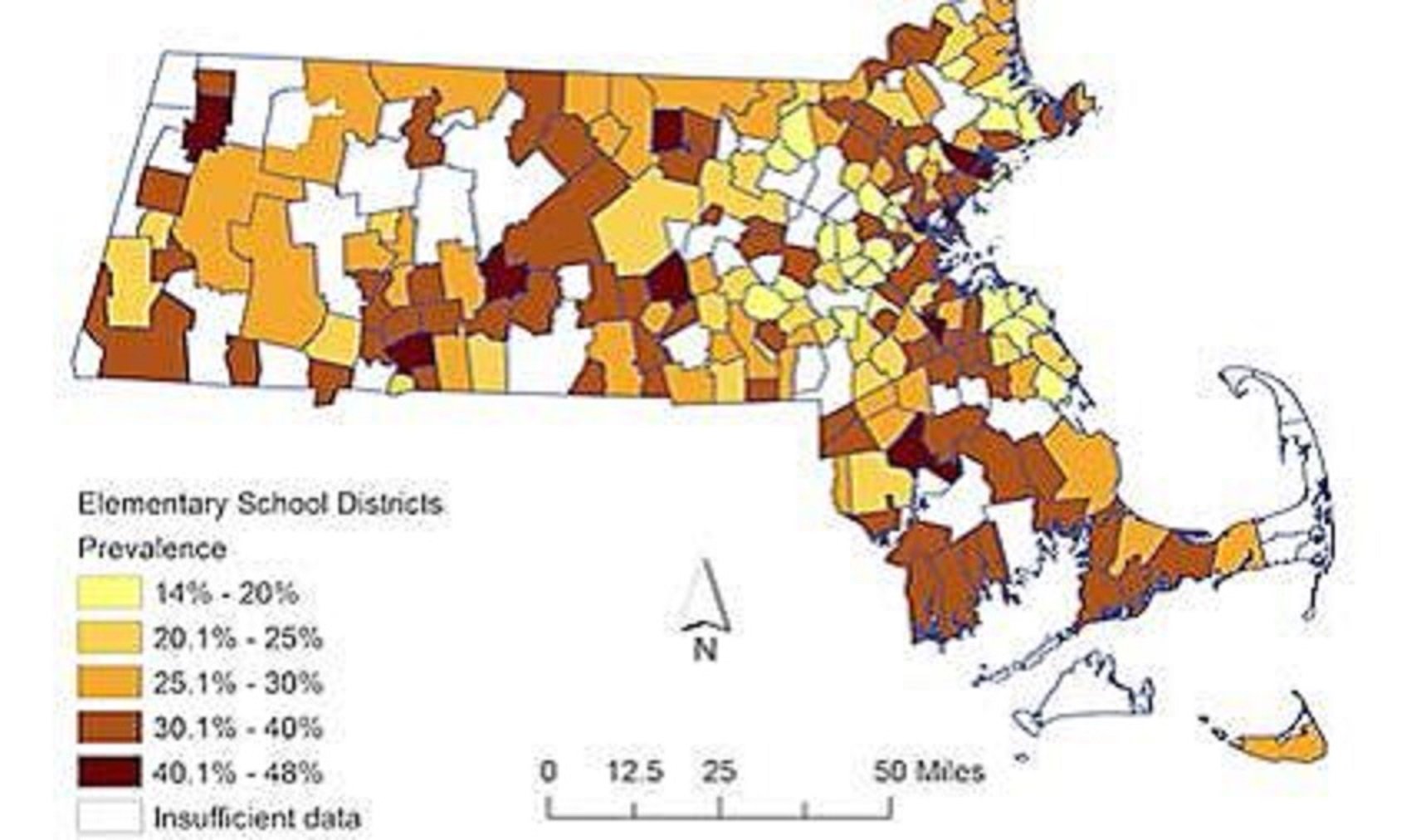 Overweight and Obesity Rates Are Improving Among Massachusetts Public Schools but Not Among Those in Socioeconomically Disadvantaged Districts
Overweight and Obesity Rates Are Improving Among Massachusetts Public Schools but Not Among Those in Socioeconomically Disadvantaged Districts
Childhood obesity is associated with many chronic diseases, such as high blood pressure, cardiovascular disease, asthma, and sleep apnea. The American Academy of Pediatrics advises that the body mass index (BMI) of children should be tracked over time, and the Institute of Medicine recommends that school systems track BMI. Since 2009, Massachusetts responded to these recommendations by measuring the BMI of children in grades 1, 4, 7, and 10. Community-based prevention programs should specifically target children in elementary schools in economically disadvantaged communities.
 Characteristics of Neighbhorhoods that Influence the Physical Activity of Latino Adults in Massachusetts
Characteristics of Neighbhorhoods that Influence the Physical Activity of Latino Adults in Massachusetts
Latinos in the United States have high rates of obesity, type 2 diabetes, and cardiovascular disease. Moving more and sitting less can help people reduce their risk of developing these conditions. The Latino adults in this study were likely to meet the physical activity guidelines of walking more than 150 minutes per week if the neighborhood was more walkable, such as with sidewalks. Adults were more sedentary if they did more things with neighbors. It is important to note that the study did not find that there was an association between the physical characteristics of a neighborhood and time spent sitting.
Technology-Assisted Interventions

Using Facebook to Deliver a Behavioral Weight Loss Intervention for Low-Income Postpartum Women
Women who live below poverty, especially women from racial and ethnic minority groups, face higher rates of obesity. Gaining excess weight during pregnancy and then retaining this weight post-partum can place these women at risk for obesity. Weight loss studies with postpartum women have had limited impact. These studies have struggled with low attendance rates due to childcare, transportation, and scheduling needs. This study pilot-tested a Facebook-delivered post-partum weight loss intervention for diverse low-income mothers.The intervention was acceptable to participants and could be feasibly delivered to diverse, low-income women.
 Using Twitter to Deliver Behavioral Weight-Loss Interventions: A Pilot Series
Using Twitter to Deliver Behavioral Weight-Loss Interventions: A Pilot Series
Face-to-face interventions to help people lose weight can be very expensive and time-consuming for both the counselor and the participant. Social media platforms, such as Twitter, could be an alternate way for counselors to communicate with patients and for patients to communicate and support each other. From the perspective of a participant, social media could provide a convenient way to participate in a group, as the participant chooses where and when to log in to the group. This study found that using a private Twitter group to deliver a behavioral weight-loss intervention is feasible and acceptable among adults who were not depressed and who had experience with social media. Participants reported feeling more weight loss support from the Twitter group than from their family and friends.
Policy, Systems, Environment
 Stepping Up Active Transportation in Community Health Improvement Plans
Stepping Up Active Transportation in Community Health Improvement Plans
Active transportation, such as biking or walking to work, can build physical activity into the day and contribute to health. The purpose of this analysis was to determine which approaches to improving physical activity through active transportation have been included in CHIPs and understand local health department characteristics related to inclusion of these approaches.
Developing Core Capabilities for Local Health Agencies to Engage in Land Use and Transportation Decision Making
Local policy decisions guiding how local roads, walkways and parks are designed
can greatly influence community physical activity opportunities. Ten capabilities were identified as important for public health stakeholders to engage in local land use and transportation decision making to improve active transportation opportunities.There are actions that health agencies of varying sizes can take to improve community physical activity opportunity.
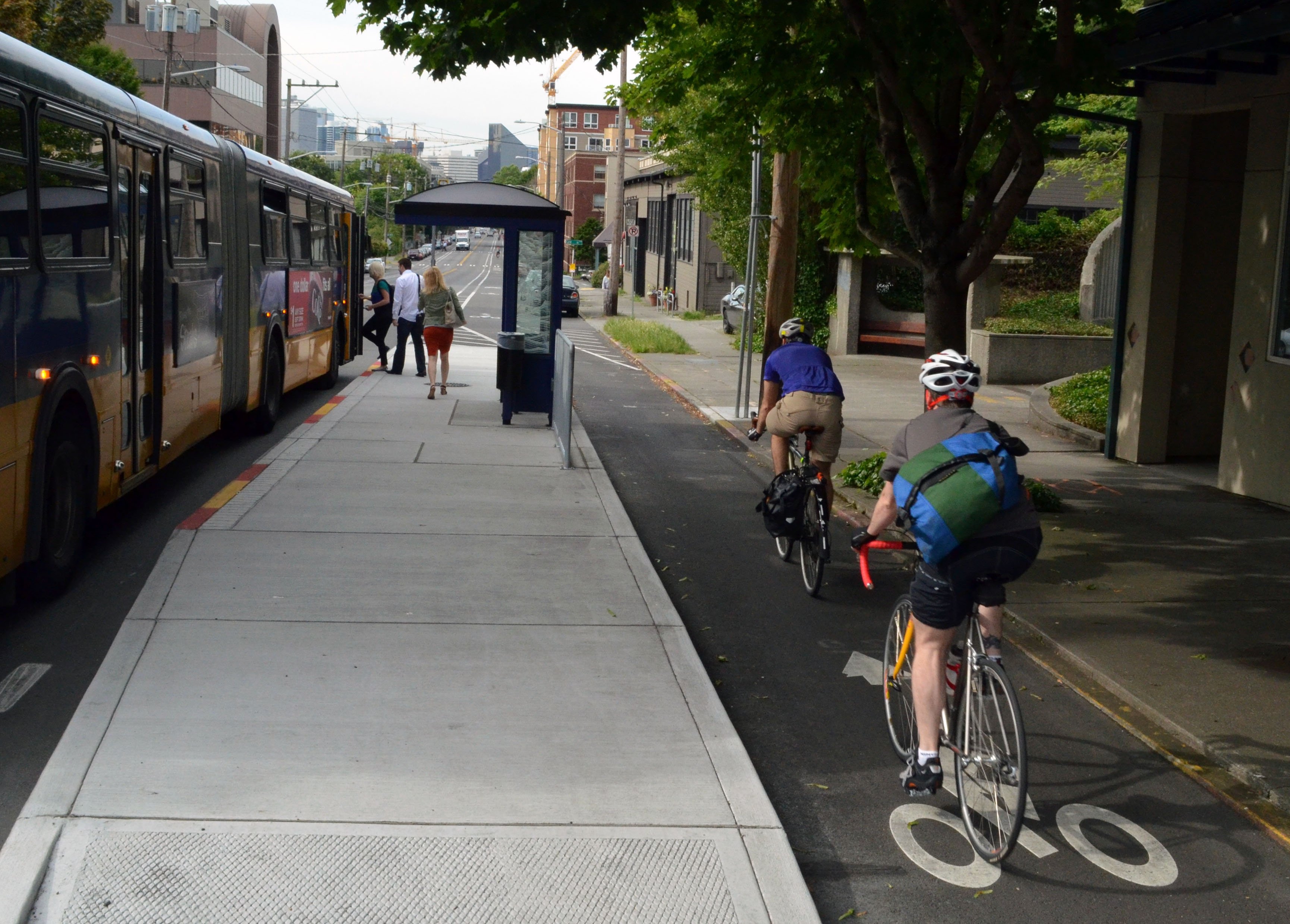
Exploring Contributions of Local Health Departments in Physical Activity Policy Decision-Making
Regular physical activity is important for health and well-being. Local communities can increase opportunities for walking and bicycling by making local decisions and policies that enhance streets, sidewalks, trails, public transportation infrastructure, parks and other recreational facilities.This study identified seven potential local health department contributions where local health departments can leverage their strengths to engage in land-use and transportation policy decision-making and foster collaborations with other sectors.

Local Health Engagement in Community Physical Activity Policy
Everyday walking and bicycling offer sustainable ways for people to meet recommended physical activity levels. Making communities more walk- and bicycle-friendly may require changing land use and transportation policy and systems. Local health departments that want to increase physical activity in their communities need to engage in these areas. tThis study identfies strategies for local health departments to engage in community physical activity policy, and organizations the strategies by health department size. [Photo: www.pedbikeimages.org/Laura Sandt]
 Walking Habits Among Older Adults in Boston Area Neighbhorhoods
Walking Habits Among Older Adults in Boston Area Neighbhorhoods
Older adults can benefit from regular physical activity, such as walking. Older adults walk for recreation, including exercise. They also walk for utilitarian reasons (for a purpose), such as to go to a store, library, or post office. Understanding why older adults walk, or why they do not walk, can help public health initiatives promote regular walking. This study found that the walking habits of older adults vary by neighborhood and walking conditions. Older adults were more likely to walk to the store, post office, or hospital if these places were in their neighborhood. In contrast, exercise walking did not seem to depend on any measureable neighborhood chracteristics.

Characteristics of Neighbhorhoods that Influence the Physical Activity of Latino Adults in Massachusetts
Latinos in the United States have high rates of obesity, type 2 diabetes, and cardiovascular disease. Moving more and sitting less can help people reduce their risk of developing these conditions. The Latino adults in this study were likely to meet the physical activity guidelines of walking more than 150 minutes per week if the neighborhood was more walkable, such as with sidewalks. Adults were more sedentary if they did more things with neighbors. It is important to note that the study did not find that there was an association between the physical characteristics of a neighborhood and time spent sitting.
Community Clinical Linkages
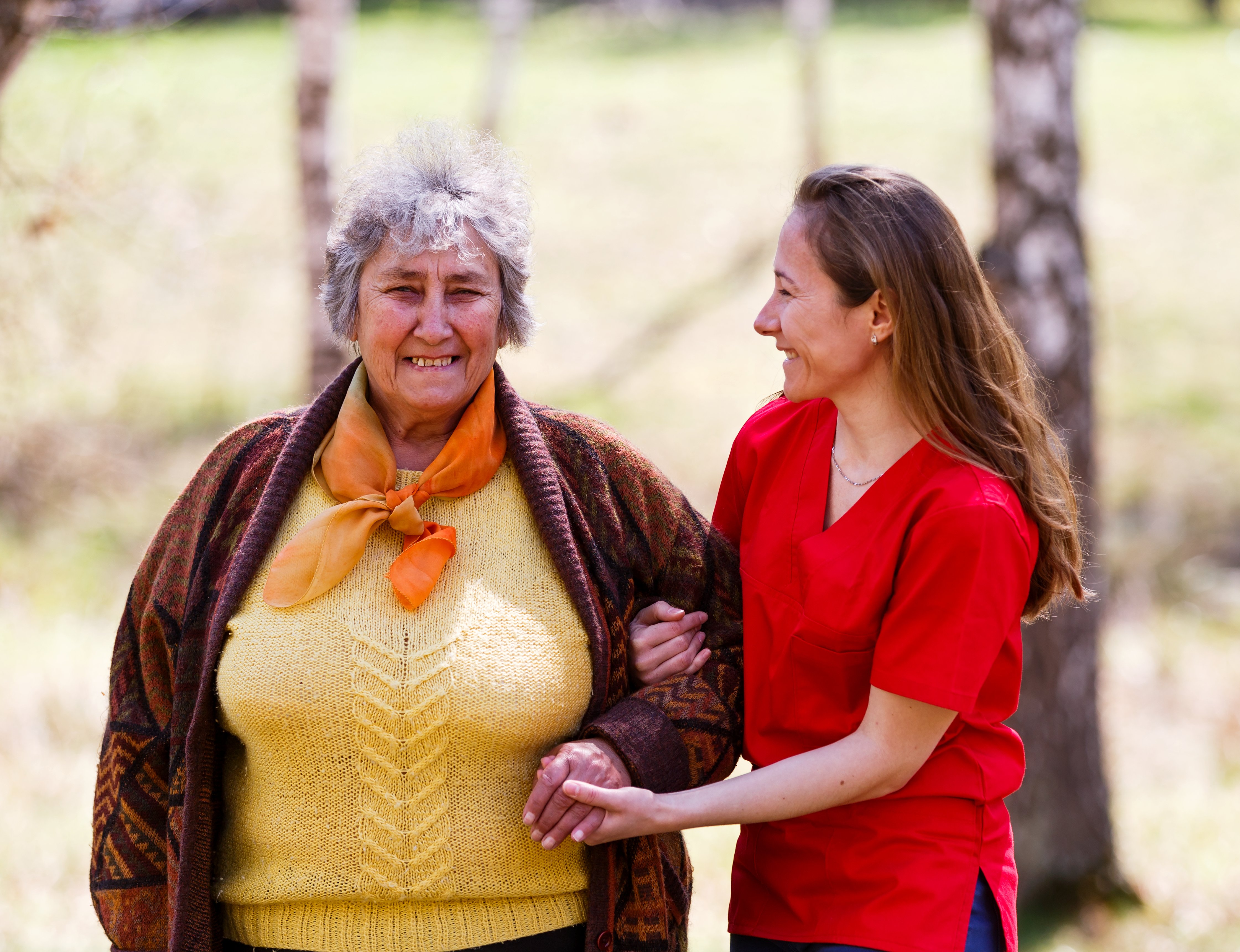
Influence of Health Care Provider Advice on Physical Activity Among US Adults with Cardiovascular Disease
Regular physical activity can help prevent cardiovascular diseases (CVD), such as heart disease, heart attacks, and strokes, and manage blood pressure. Research has found that regular physical activity in the form of at least 150 minutes of moderate-intensity PA per week, or at least 75 minutes of vigorous intensity PA per week helps to prevent and control the effects of CVD. The United States Preventive Services Task Force (USPSTF) recommends that health care providers advise or refer patients with overweight/obesity and at least one additional CVD risk factor to programs hat will counsel them to be more active. This study looked at the association between physical activity among US adults with overweight/obesity and at least one additional risk factor for CVD and reported provider advice to increase physical activity. This study found that only about half of these adults report receiving advice from their health care provider to be more active. Inactive U.S. adults with CVD risk were more likely to receive advice from their providers to be more active.
Navigating to Health with Community Health Workers
Patient Navigators are trained lay health care workers who help patients access and use health care services. As they often reside in the same communities as patients and share similar characteristics such as languages, culture, race, ethnicity, and socioeconomic status, they can foster rapport and trust with patients. Health care systems are increasingly using Patient Navigators to reach diverse patients who are often hard to reach. This study found that personalized, direct telephone calls by Patient Navigators with patients can help patients seek care with a primary health care provider.
Other

Development and Validation of a Weight Literacy Scale in English and Spanish
Over one third (36.5%) of U.S. adults are obese, a prevalence that continues to increase nationally and globally. Obesity is associated with many chronic diseases, increased health care costs, and shorter life expectancies. Research has found that people who are able to understand health information are less likely to be obese, but there is limited research about what people know and understand about weight loss (weight literacy). The purpose of this study was to create a weight literacy assessment scale that is based upon research evidence, and that can help to understand what English-speaking and Spanish speaking individuals know and understand about weight loss.

Measuring physical activity in lifestyle interventions among adults: A systematic overview
Physical inactivity is responsible for 1 out of 10 premature deaths worldwide and is a risk factor for numerous chronic diseases. Although the World Health Organization recommends that adults engage in at least 150 minutes of moderate intensity physical activity per week in order to receive the benefits of regular physical activity, only about 1 in 4 adults are this active. Researchers are developing and testing new ways to help adults be more active. It is critical to be able to reliably measure the impact of these strategies and programs with valid, reliable, and direct measures of physical activity. Two types of measures are most common – subjective and objective measures. Subjective measures, such as self reported questionnaires, are often not accurate. It can be challenging for people to remember what they have done. Objective measures, such as wearable devices (e.g. pedometers, accelerometers) or direct observation, have been shown to be more precise. This review found that research is increasingly using objective measures, but technology needs to improve to be able to capture all forms or physical activity consistently.

An Evaluation of a Train-The-Trainer Program to Build Capacity for Training Tobacco Treatment Specialists
In the United States, 16.8% of adults smoke, contributing to 480,000 deaths per year. Despite strong evidence that tobacco treatment methods are effective in helping users quit using tobacco, few users actually use these methods. Treatment is slowly being incorporated into clinical care, and screening and quitting assistance has improved. Since 1999, The UMass Chan Medical School’s Center for Tobacco Treatment Research and Training (CTTRT) has offered the UMass Tobacco Treatment Specialist training (UMass TTS). Recognizing the need for more trained tobacco treatment specialists, it created an additional program to train others to deliver the training, called the Train-the-Trainer in Tobacco Treatment (T4) program. This study found that the T4 model could extend the reach of the On-site UMass TTS Training Program, and that its trainees could offer the same quality of training to participants.
 Pediatrician Counseling to Eliminate Youth Tobacco Smoking
Pediatrician Counseling to Eliminate Youth Tobacco Smoking
More than 3.6 million US youth currently smoke and 90% of adult smokers start smoking before they are 18 years old. Youth tobacco use can cause early disease development, disability and death. Pediatricians have an important role in providing consultation on tobacco use and dependence to the youth they care for and their parents who use tobacco in order to address this major pediatric health concern. Youth identify physicians as their primary source for information on smoking and how to quit. Most pediatricians (81%) advise their young patients who smoke to quit, but onlya third (32%) discuss strategies on how to quit. Pediatricians said limited time and lack of training in how to assist their patients contributed to their not providing counseling on tobacco use. Pediatricians are in a prime position to deliver the recommended 5As model of care (Ask, Advise, Assess, Assist,Arrange follow-up) suggested by the Public Health Service Clinical Practice Guideline and modified for youth.
 Teaching Medical Students to Help Patients Quit Smoking
Teaching Medical Students to Help Patients Quit Smoking
Physicians have an essential and effective role in helping patients stop smoking. Unfortunately, the use of brief and effective tobacco dependence treatment interventions such as 5A counseling by physicians is limited and likely due to inadequate training. Medical students, for example, are rarely prepared to help patients modify their smoking behaviors. Currently, however, it is recommended that competency in tobacco dependence treatment be a core medical school graduation requirement. Yet, no comprehensive tobacco treatment training curriculum has been developed or evaluated for medical students. Physicians see 70% of adults’ smokers every year, therefore, medical students must be prepared to offer counseling and treatment to help patients quit smoking. Medical education should include more intensive and interactive tobacco treatment training throughout all of medical school training. This training will increase both their confidence in their ability to provide effective treatment, as well as increase the likelihood that physicians will routinely provide tobacco dependence treatment to patients.
![]() Tanning Salon Accessibility and Cancer at Top US Colleges and Universities
Tanning Salon Accessibility and Cancer at Top US Colleges and Universities
Many young adults tan in indoor tanning salons, even though this increases the risk of cancer. In fact, almost ¼ of white women between the ages of 18-35 years old have used an indoor tanning salon in the past year. Reducing the availability of indoor tanning in and around college campuses is an important public health target.This study looked into the availability of indoor tanning facilities located in the top 125 US colleges and university campuses and in off-campus housing located in surrounding areas. The study used the US News and World Report rankings to determine the top US 125 colleges and universities. Researchers then searched for information of tanning salons by reading websites, and making phone calls to housing offices, scouring Google maps of surrounding areas to inquire about availability, costs, and options of paying for them with campus cash cards.

